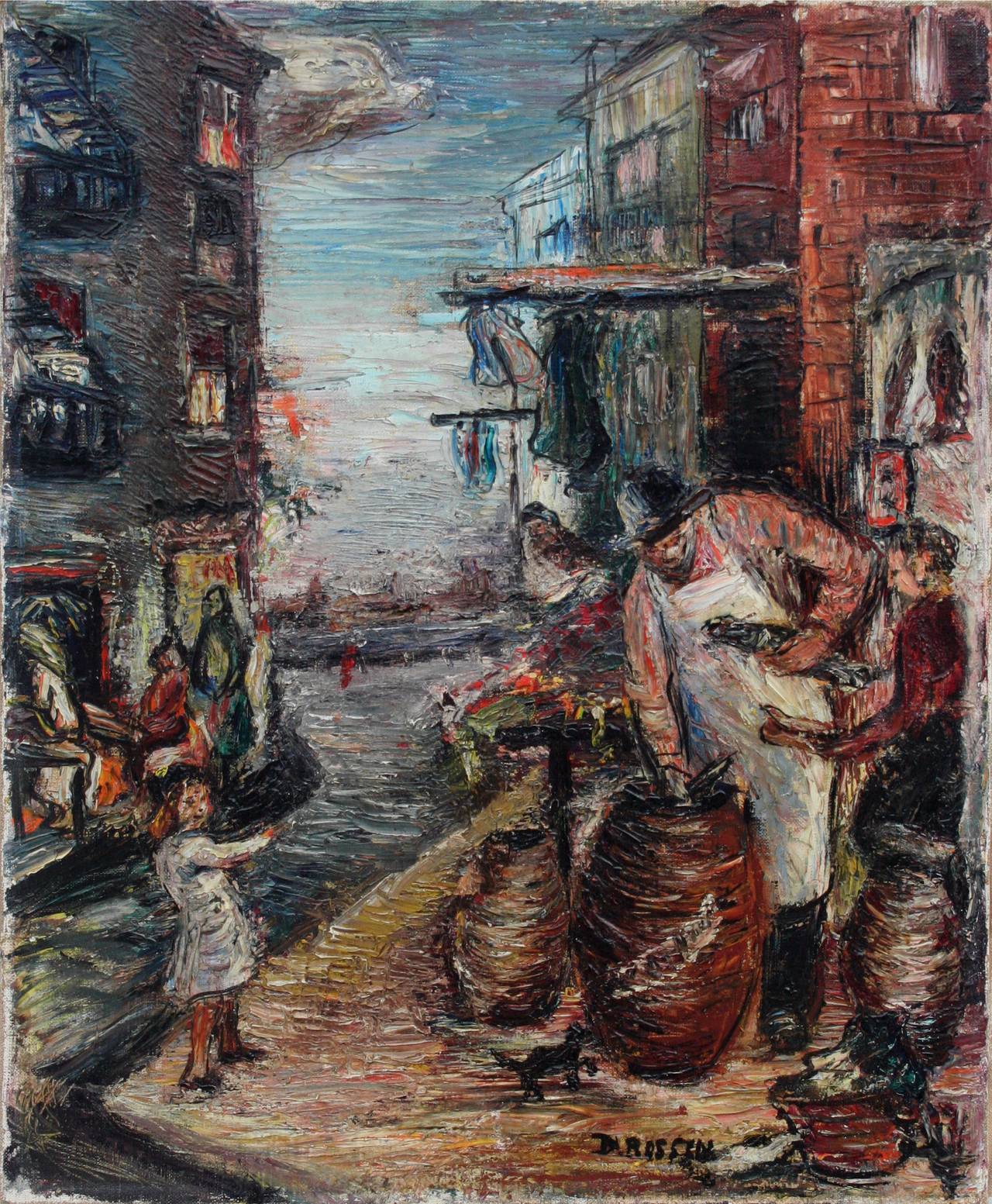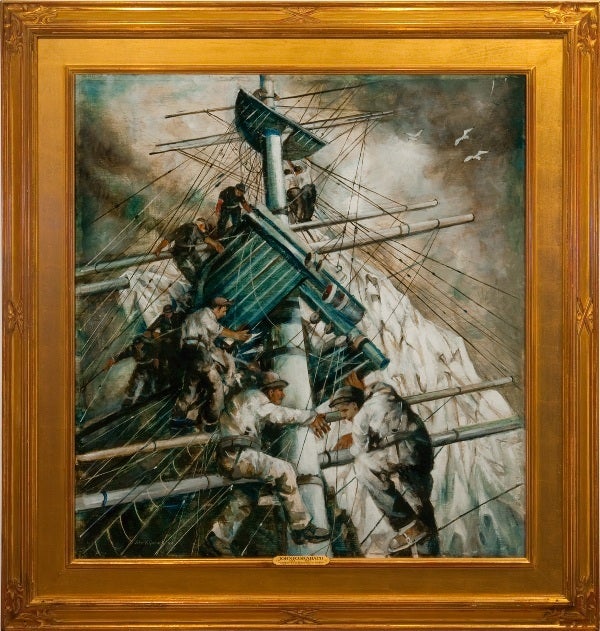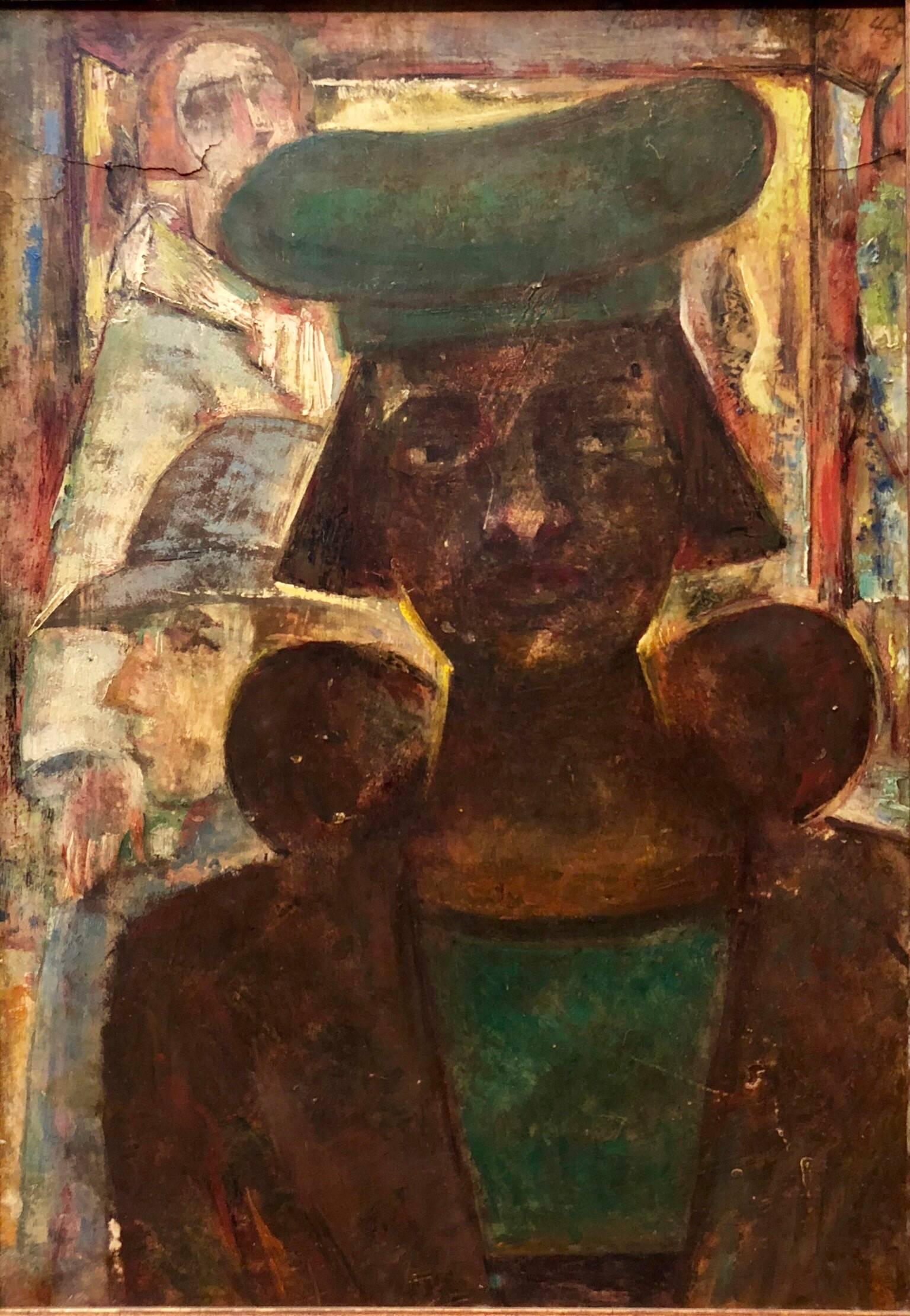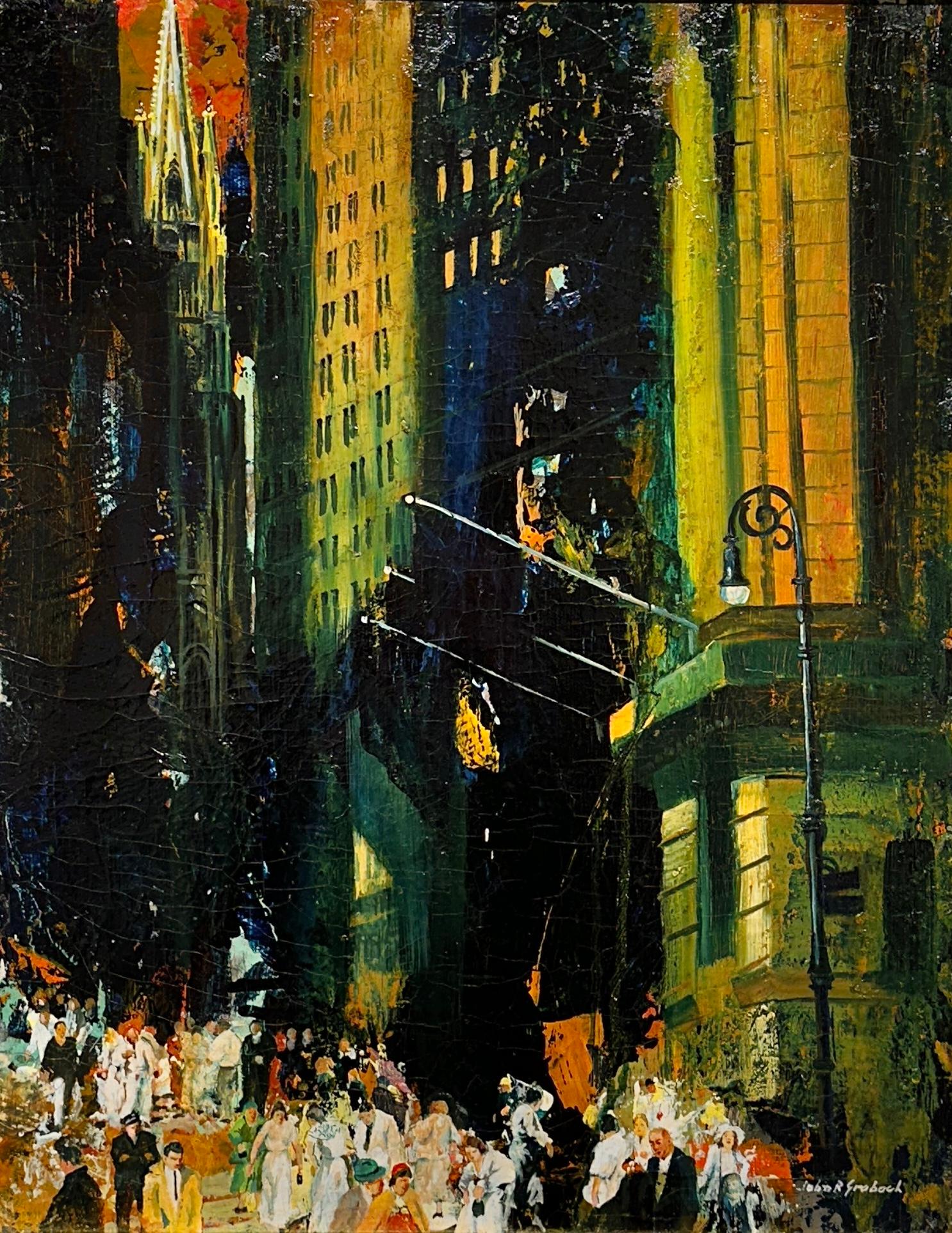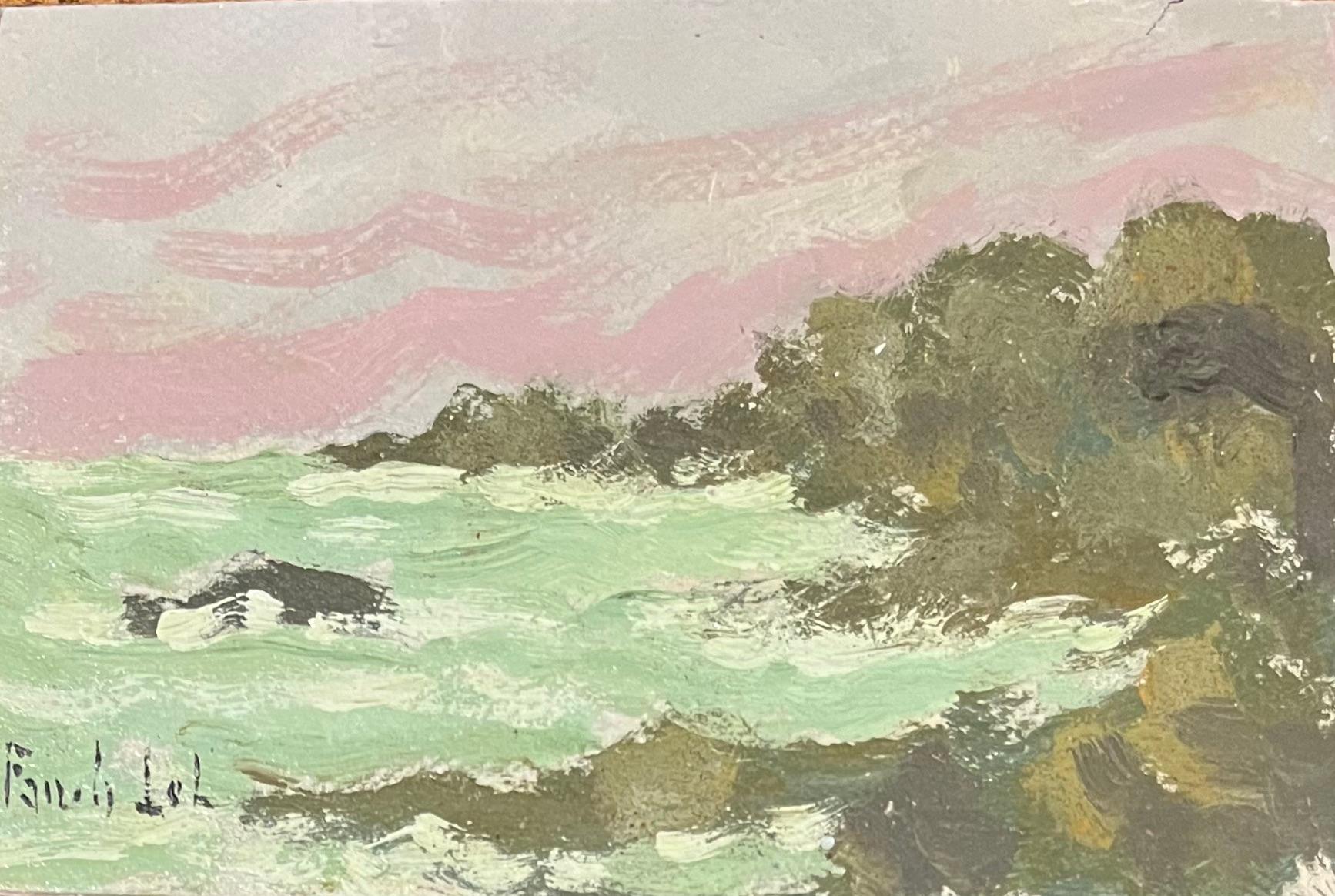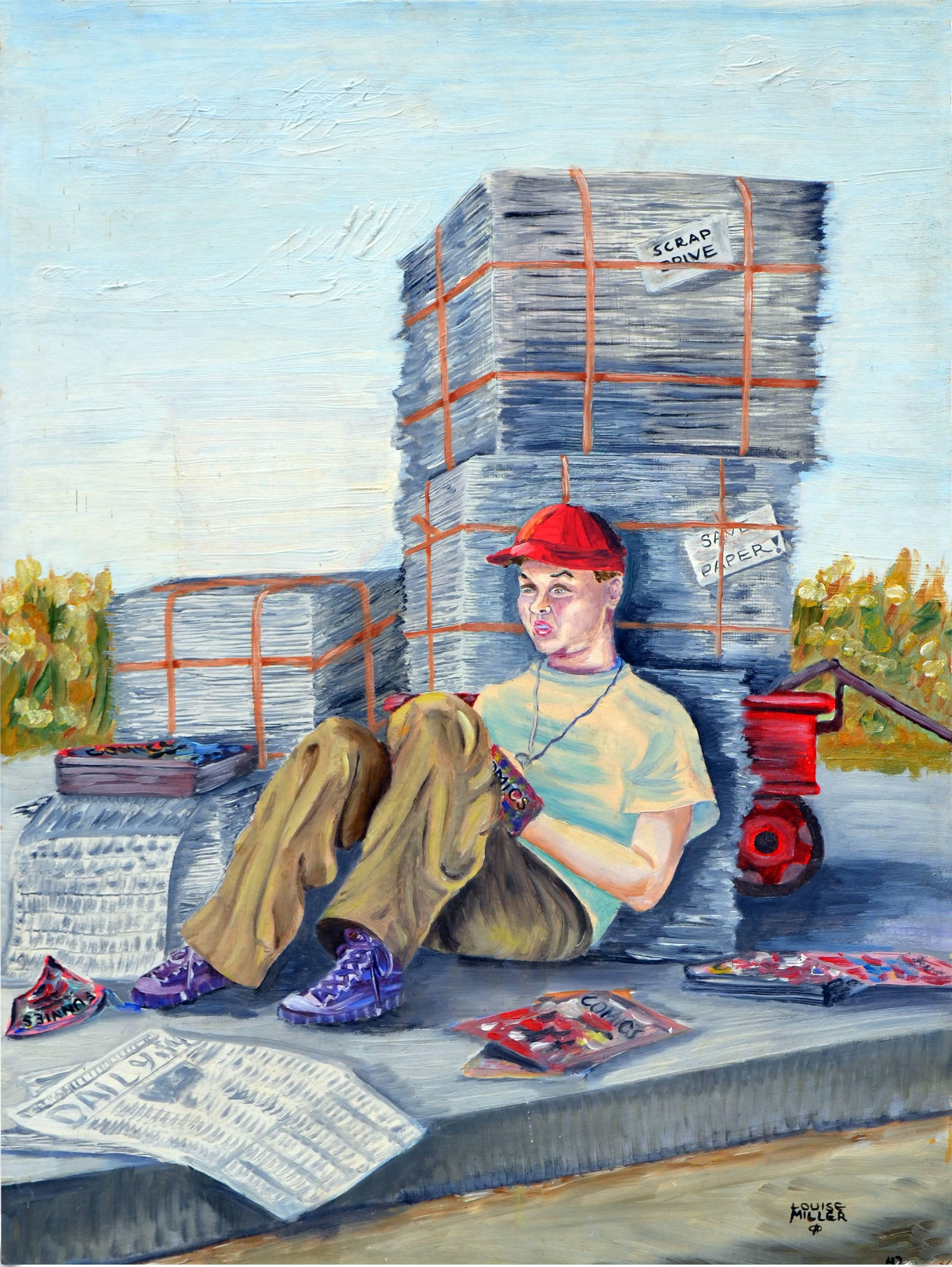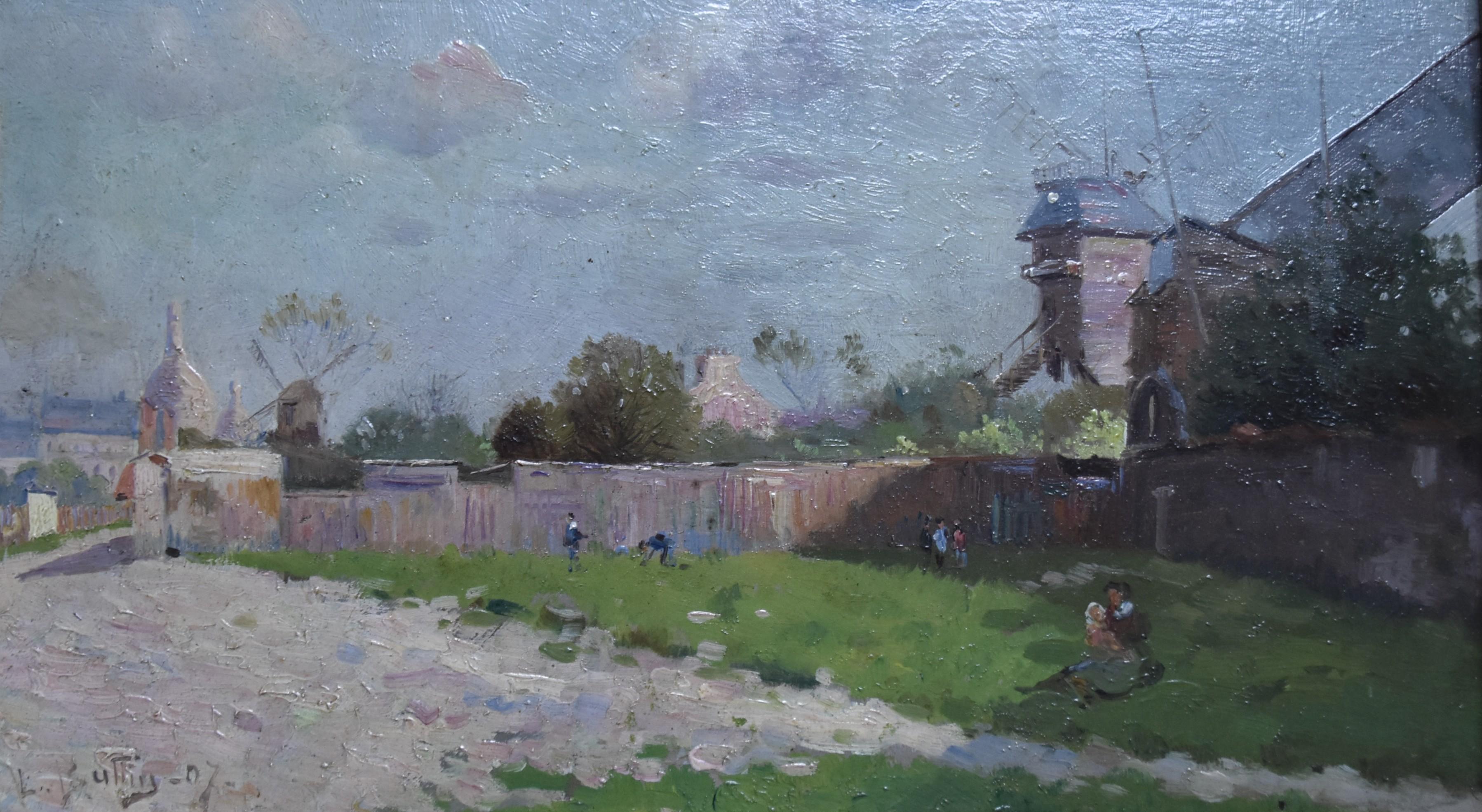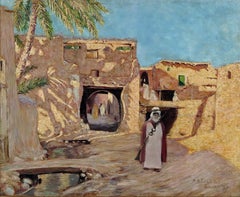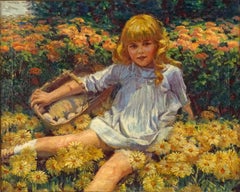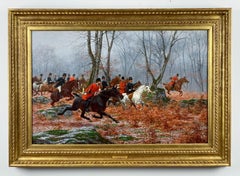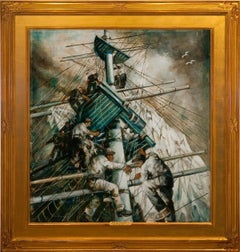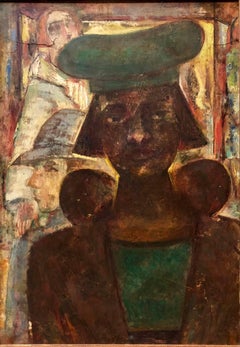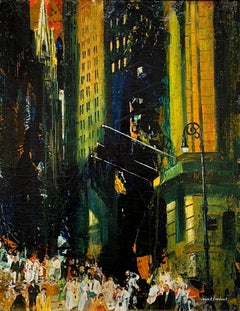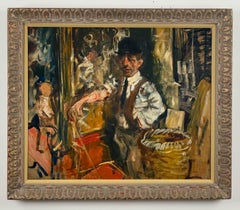
Outside a Deli
View Similar Items
Want more images or videos?
Request additional images or videos from the seller
1 of 7
Jack LevineOutside a Deli1940's
1940's
$32,000List Price
About the Item
- Creator:Jack Levine (1915, American)
- Creation Year:1940's
- Dimensions:Height: 36.25 in (92.08 cm)Width: 42 in (106.68 cm)Depth: 2 in (5.08 cm)
- Medium:
- Movement & Style:
- Period:
- Condition:
- Gallery Location:Sheffield, MA
- Reference Number:Seller: Art L1111stDibs: LU70035409532
Jack Levine
Jack Levine was an American social realist painter and printmaker, born and raised in Boston. He enrolled in art classes at the Museum Fine Arts School of Boston and came under the influence of Dr. Denman Ross of Harvard University, who recognized his talent and gave him free art lessons. He was especially interested in the Old Masters, at the Fogg Museum, at Harvard. In 1935, he became a W.P.A. artist, using his experience growing up in a lower-class neighborhood, in his subject matter.
About the Seller
4.0
Vetted Professional Seller
Every seller passes strict standards for authenticity and reliability
1stDibs seller since 2017
53 sales on 1stDibs
Typical response time: 10 hours
Authenticity Guarantee
In the unlikely event there’s an issue with an item’s authenticity, contact us within 1 year for a full refund. DetailsMoney-Back Guarantee
If your item is not as described, is damaged in transit, or does not arrive, contact us within 7 days for a full refund. Details24-Hour Cancellation
You have a 24-hour grace period in which to reconsider your purchase, with no questions asked.Vetted Professional Sellers
Our world-class sellers must adhere to strict standards for service and quality, maintaining the integrity of our listings.Price-Match Guarantee
If you find that a seller listed the same item for a lower price elsewhere, we’ll match it.Trusted Global Delivery
Our best-in-class carrier network provides specialized shipping options worldwide, including custom delivery.More From This Seller
View AllBiskra Algeria
By Arthur George Collins
Located in Sheffield, MA
Arthur George Collins
American, b.1866
Biskra Algeria
Oil on canvas
Signed and dated Biskra, 1893
26 ½ by 32 ½ in. W/frame 32 ½ by 38 ½ in.
Arthur studied at the Julien Academy, P...
Category
1890s Impressionist Landscape Paintings
Materials
Oil
Young Girl Resting in a Bed of Flowers
Located in Sheffield, MA
James George Weiland
American, 1872-1968
Young Girl Resting in a Bed of Flowers
Oil on canvas
24 by 30 in. W/frame 30 by 36 in.
Signed lower left...
Category
1910s American Impressionist Figurative Paintings
Materials
Oil
Bathers
By John Edward Costigan
Located in Sheffield, MA
John Edward Costigan, N.A.
American, 1888-1972
Bathers
Oil on canvas
Signed ‘J.E. Costigan N.A.’ lower left
20 by 24 in. W/frame 26 by 30 in.
John Costigan was born of Irish-American parents in Providence, Rhode Island, February 29, 1888. He was a cousin of the noted American showman, George M. Cohan, whose parents brought the young Costigan to New York City and was instrumental in starting him on a career in the visual arts. They were less successful in encouraging him to pursue formal studies at the Art Students League (where, however, he later taught) than in exposing him to the commercial art world through the job they had gotten him with the New York lithographing firm that made their theatrical posters.
At the H. C. Miner Lithographing Company, Costigan worked his way up from his entry job as a pressroom helper, through various apprenticeships, to the position of sketch artist. In the latter capacity he was an uncredited designer of posters for the Ziegfeld Follies and for numerous silent films. Meanwhile, he had supplemented his very meager formal studies in the fine arts with a self-teaching discipline that led to his first professional recognition in 1920 with the receipt of prizes for an oil painting and watercolor in separate New York exhibitions.
A year earlier, Costigan had wed professional model Ida Blessin, with whom he established residence and began raising a family in the sleepy little rural New York hamlet of Orangeburg, the setting for the many idyllic farm landscapes and wood interiors with which he was to become identified in a career that would span half a century.
John Costigan’s first national recognition came in 1922 with his winning of the coveted Peterson Purchase prize of the Art Institute of Chicago for an oil on canvas, “Sheep at the Brook.” It marked the start of an unbroken winning streak that would gain him at least one important prize per year for the remainder of the decade. The nation’s art journalists and critics began to take notice, making him the recurring subject of newspaper features and magazine articles. The eminent author and critic Edgar Holger Cahill was just a fledgling reporter when he wrote his first feature, “John Costigan Carries the Flame,” for Shadowland Magazine in 1922. Costigan had his first one-man show of paintings at the Rehn Gallery on New York’s 5th Avenue in November, 1924, to be followed less than three years later by another at the Art Institute of Chicago. In addition, Costigan’s work has been—and continues to be included, side-by-side with that of some of America’s most high-profile artists, in museum and gallery exhibitions throughout the country. His renown had peaked in the early 1930s, by which time his work had been honored with nearly every major award then being bestowed in the fine arts and had been acquired for the permanent collections of several prestigious American museums, including New York’s Metropolitan (which only recently, in 1997, deaccessioned his “Wood Interior,” acquired in 1934).
Although Costigan’s celebrity had ebbed by the late 1930s, the Smithsonian Institution saw fit in 1937 to host an exhibition exclusively of his etchings. And, in 1941, the Corcoran Gallery (also Washington, D.C.) similarly honored him for his watercolors. (Another Washington institution, the Library of Congress, today includes 22 Costigan etchings and lithographs in its permanent print collection.)
During World War II, Costigan returned briefly to illustrating, mainly for Bluebook, a men’s pulp adventure magazine. A gradual revival of interest in his more serious work began at the end of the war, culminating in 1968 with the mounting of a 50-year Costigan retrospective at the Paine Art Center and Arboretum in Oshkosh, Wisconsin. Oils, watercolors and prints were borrowed from museums and private collections throughout the country, and the exhibition was subsequently toured nationally by the Smithsonian Institution.
John Costigan died of pneumonia in Nyack, NY, August 5, 1972, just months after receiving his final prestigious award —the Benjamin West Clinedinst Medal of the Artist’s Fellowship, Inc., presented in general recognition of his “...achievement of exceptional artistic merit...” in the various media he had mastered in the course of his career.
This painting depicts one of the artist's favorite themes --the farm family bathing...
Category
1950s Post-Impressionist Figurative Paintings
Materials
Oil
A Travers Bois
Located in Sheffield, MA
Jean Richard Goubie
French, 1842-1899
A Travers Bois
Oil on canvas
25 ½ by 39 ¾ in. W/frame 30 ½ by 45 in.
Circa 1892
Jean Richard Goubie was bo...
Category
1890s Barbizon School Landscape Paintings
Materials
Oil
The Three Kings
Located in Sheffield, MA
Henry Dele Coeuillerie
American, 1864-1932
The Three Kings
Oil on canvas
Signed & dated lower right
30 by 36 in. W/frame 35 ½ by 41 ½ in.
Provenance...
Category
Early 20th Century American Impressionist Figurative Paintings
Materials
Oil
Woman in Kimono
By Everett Lloyd Bryant
Located in Sheffield, MA
Everett Lloyd Bryant
American, 1864-1945
Woman in Kimono
Oil on canvas
Signed lower right
30 by 25 in. W/frame 35 by 30 in.
Everett studied wit...
Category
1920s Post-Impressionist Figurative Paintings
Materials
Oil
You May Also Like
The Fishmonger 1940's New York Impasto Figurative Cityscape
By Dorothy Rossen Greenberg
Located in Soquel, CA
A vivid mid-century impasto figurative cityscape oil painting of New York during the 1940s by Dorothy Rossen Greenberg (American, 1915-2005). A Fishmonger plies his trade amidst a ha...
Category
1940s Ashcan School Figurative Paintings
Materials
Oil, Linen
"After the Storm"
By John R. Grabach
Located in Lambertville, NJ
Signed LL
John Grabach was a highly regarded New Jersey artist, teacher and author of a classic text, How to Draw the Human Figure. He was born in Massachusetts, and with his widow...
Category
20th Century Ashcan School Figurative Paintings
Materials
Oil, Panel
Modernist Oil Painting the Shop Window NYC 1940s WPA era
By Maurice Becker
Located in Surfside, FL
the Shop Window New York City, 1940s
17.75X25 sight size.
Maurice Becker (1889–1975) was a radical political artist best known for his work in the 1910s and 1920s for such publica...
Category
Early 20th Century Ashcan School Landscape Paintings
Materials
Oil, Board
New York scene done by John Grabach Artist "Trinity Church - Wall Street"
Located in Rockport, MA
Great Wall Street piece by John R. Grabach (March 2, 1886 – March 17, 1981) with expressive colors and figures.
Grabach was a renowned American painter, best known for his evocative...
Category
1920s Ashcan School Figurative Paintings
Materials
Oil
$11,600 Sale Price
20% Off
Spanish school landscape with river oil painting Spain
Located in Barcelona, Barcelona
Oil on canvas glued to board.
Oil measures 25x40 cm.
Frameless.
Illegible signature.
Category
1920s Barbizon School Landscape Paintings
Materials
Board, Oil, Canvas
"Mt. Evans and Bierstadt, Colorado" Oil Painting
Located in Denver, CO
David Shingler's (NC based) "Mt. Evans and Bierstadt, Colorado" is an oil painting that depicts a green grassy plain dotted with Pine trees leading to the snow capped mountains in th...
Category
2010s American Impressionist Figurative Paintings
Materials
Oil, Wood Panel
